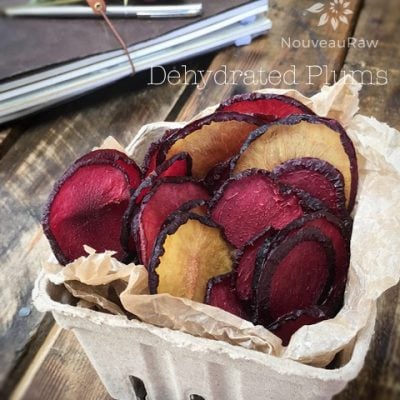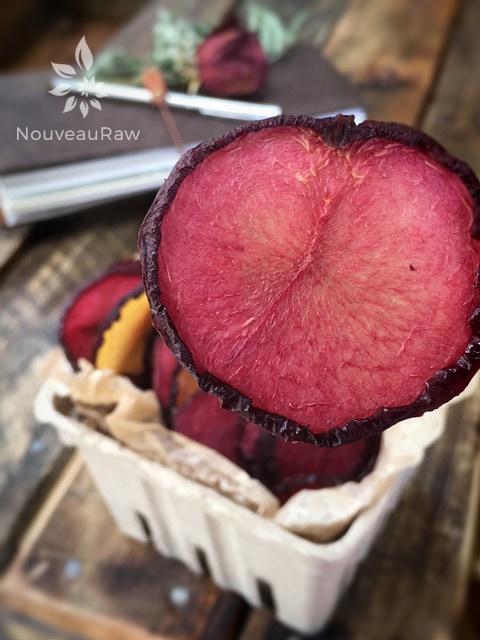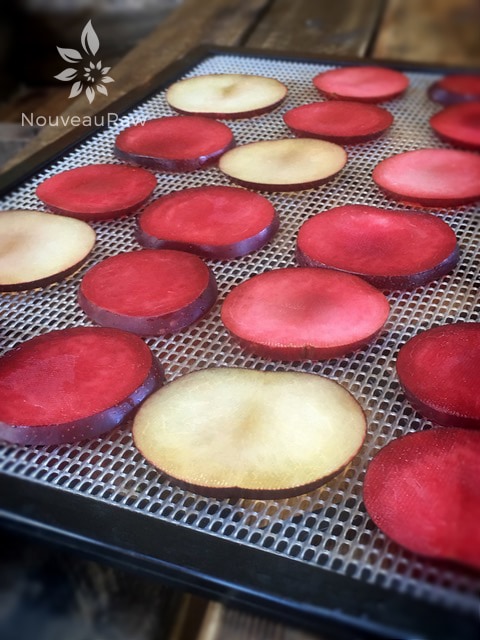


 Add to favorites
Add to favorites
~ raw, dehydrated ~
It’s funny, I have always known that prunes are dried plums but yet in my mind when I think of both of them… they seem like completely different fruits. I happen to LOVE prunes.
Growing up, I would sneak them out of the kitchen cabinet as though they were a guilty pleasure to eat. When people think of prunes, they think of the digestive system and what those prunes are going to do to it… Me? They don’t affect me in that way. I can eat 20 of them or drink a quart of prune juice and it just doesn’t affect me in any way, except for pleasing my taste buds. :)
They are high in vitamin A, followed by vitamin C, vitamin K, folate, and choline. As well as potassium, phosphorus, magnesium, calcium, fluoride, and a trace amount of Iron. And let’s not forget that they also contain Omega-6 fatty acids.
Plums are available year round, but they are at their best between May and September. As you search through the bins of them at the grocery store, look for plums that are rich color and may still have a slight whitish “bloom,” indicating that they have not been over handled. Avoid those ones with excessively soft, or with cuts or bruises. Ripen plums yield to gentle pressure and feature a sweet aroma.
You can’t rush great taste so if they are slightly hard, you can keep them at room temperature until they ripen. Ripe ones can be placed in the refrigerator but should be brought to room temperature before being eaten in order to enjoy their rich flavor. For dehydrating purposes, you want the plums to be ripe but not too mushy. There are many ways of slicing them for drying. In this post, I sliced them on my mandolin. If they are too soft for that, you can use a knife. Make them as thick or thin as you wish. I didn’t find the need to pre-treat them at all. Enjoy and have fun!
 Ingredients:
Ingredients:
Here they are ready for the dehydrator. They can be close together, but not touching. That way they won’t stick to each other.
Hi. Canwe use peeled fruits ? I can’t have organic fruits but would like to dehydrate anyway. Thanks.
Yes, you can peel the fruit first, then dehydrate. :) amie sue
Thanks.